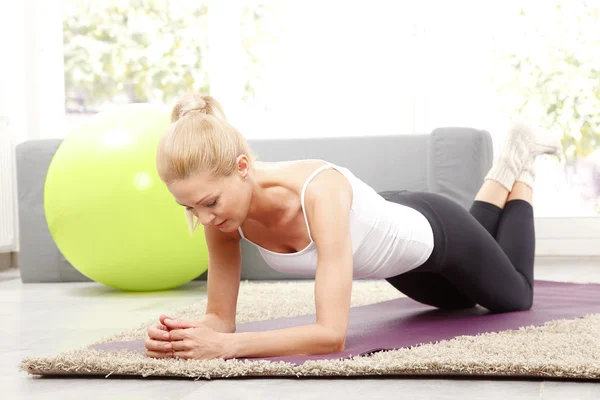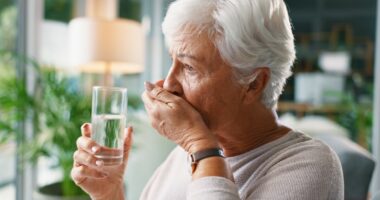Share this @internewscast.com
Prevent Osteoporosis Without Meds: Osteoporosis is a common yet serious condition characterized by weakened bones that become fragile and prone to fractures. According to Meryl LeBoff, MD, chief of the Calcium and Bone Section and director of the Skeletal Health and Osteoporosis Center at Brigham and Women’s Hospital, osteoporosis involves a decrease in bone density and deterioration of bone tissue, which significantly increases the risk of fractures, especially in the hip, spine, and wrist. This condition often develops silently over many years without symptoms until a fracture occurs, making prevention crucial.

What is Osteoporosis?
Osteoporosis literally means “porous bones.” It occurs when the creation of new bone doesn’t keep up with the removal of old bone. Bone is a living tissue that is constantly being broken down and rebuilt. In osteoporosis, the balance tips toward bone loss, resulting in bones that are less dense and more fragile. Dr. LeBoff emphasizes that osteoporosis is not an inevitable part of aging but a preventable and manageable condition through lifestyle choices and proper care.
Foods and Drinks to Prevent Osteoporosis
Nutrition plays a fundamental role in maintaining bone health and preventing osteoporosis. Calcium and vitamin D are the cornerstones of bone strength, but a variety of other nutrients and foods contribute to skeletal health.
Calcium and Vitamin D Sources
Calcium is the primary mineral in bones, and adequate intake is essential to maintain bone density. Dairy products such as low-fat or non-fat milk, yogurt, and cheese are excellent sources, often fortified with vitamin D to enhance calcium absorption. Fatty fish like salmon, mackerel, and sardines provide both calcium (especially when eaten with bones) and vitamin D, which is critical for calcium metabolism.
Vegetables and Fruits Rich in Bone-Building Nutrients
Dark leafy greens—such as kale, collard greens, turnip greens, bok choy, and Chinese cabbage—offer substantial calcium and vitamin K, which helps reduce osteoporosis risk. Other vegetables like spinach, beet greens, and broccoli provide magnesium and potassium, minerals that support bone structure and function. Fruits such as oranges, grapefruit, papaya, prunes, and figs contribute vitamin C, potassium, and magnesium, all beneficial for bone health. For example, prunes have been shown in research to slow bone loss and improve bone density when consumed regularly.
Plant-Based and Fortified Alternatives
For those who avoid dairy, fortified plant-based milks (soy, almond, coconut) can be good calcium and vitamin D sources—just check the labels to ensure they are enriched. Tofu, especially calcium-set varieties, is a versatile and potent source of calcium and contains isoflavones, which may protect postmenopausal women from bone loss.
Additional Nutrients and Foods
Emerging research suggests benefits from foods rich in omega-3 fatty acids (such as flaxseed and fish oils), olive oil, and soybeans, which may have anti-inflammatory and bone-supportive effects. Including these in the diet can complement traditional bone-building nutrients.
Exercises to Strengthen Bones and Prevent Osteoporosis
Physical activity is a powerful tool for preventing osteoporosis, as it stimulates bone formation and slows bone loss. The key is to engage in exercises that apply mechanical stress to bones, encouraging them to become stronger.

Weight-Bearing Exercises
These exercises require your body to work against gravity, which helps maintain or increase bone density. Examples include brisk walking, jogging, running, climbing stairs, tennis, badminton, and dancing. Higher-impact activities generally produce greater bone-strengthening effects, but individuals should choose exercises that match their fitness and health status to avoid injury.
Muscle-Strengthening Exercises
Resistance training, which involves working muscles against weights, resistance bands, or body weight (like push-ups and pull-ups), not only builds muscle but also puts stress on bones, promoting their strength. Performing these exercises at least twice a week is recommended to maximize bone health benefits.
Balance and Flexibility Training
Falls are a leading cause of fractures in people with osteoporosis. Exercises that improve balance and flexibility—such as tai chi, yoga, walking on unstable surfaces, lunges, and step-ups—can reduce fall risk by enhancing coordination and muscle control. Incorporating balance exercises at least twice weekly is advised for older adults.
Comprehensive Exercise Programs
A well-rounded osteoporosis exercise program includes weight-bearing, muscle-strengthening, balance, and flexibility components. Such programs have been shown to reduce the risk of falls resulting in fractures by more than 60%, according to a BMJ analysis. Gradually increasing intensity and tailoring exercises to individual risk factors—such as age, frailty, history of fractures, and menopausal status—are essential for safety and effectiveness.
Bullet Points: Key Foods and Exercises to Prevent Osteoporosis
- Foods rich in calcium: Low-fat dairy, calcium-set tofu, canned sardines and salmon (with bones), fortified plant milks
- Vitamin D sources: Fatty fish, fortified dairy and plant milks, sunlight exposure
- Bone-supportive vegetables: Kale, collard greens, turnip greens, broccoli, bok choy
- Bone-friendly fruits: Oranges, grapefruit, prunes, figs
- Omega-3 rich foods: Fish oil, flaxseed oil, soybeans
- Weight-bearing exercises: Brisk walking, jogging, tennis, dancing, stair climbing
- Muscle-strengthening exercises: Weight lifting, resistance bands, body-weight exercises
- Balance and flexibility: Tai chi, yoga, lunges, step-ups, walking on unstable surfaces
This integrated approach empowers individuals to maintain strong bones and reduce osteoporosis risk naturally, without relying solely on medications.
Conclusion
Preventing osteoporosis without medication is achievable through a combination of nutrient-rich foods, adequate vitamin D, and a consistent exercise regimen that strengthens bones and improves balance. Dr. Meryl LeBoff’s expertise underscores the importance of integrating these lifestyle factors to maintain skeletal health and reduce fracture risk. By prioritizing calcium-rich foods like dairy, leafy greens, fortified plant-based alternatives, and bone-friendly fruits, alongside engaging in weight-bearing and resistance exercises, individuals can take proactive steps to protect their bones naturally. This holistic approach not only supports bone density but also enhances overall mobility and quality of life, making it a sustainable strategy for long-term health.
Also Read | The Hidden Dangers of Checking Your Phone First Thing in the Morning
We offer the most up-to-date information from top experts, new research, and health agencies, but our content is not meant to be a substitute for professional guidance. When it comes to the medication you’re taking or any other health questions you have, always consult your healthcare provider directly.
















